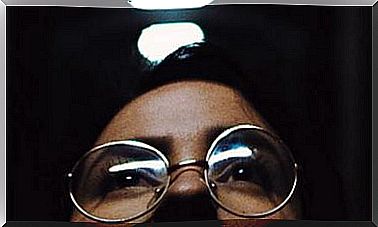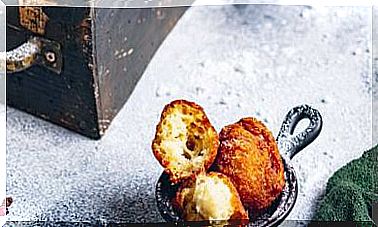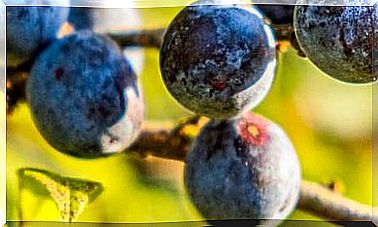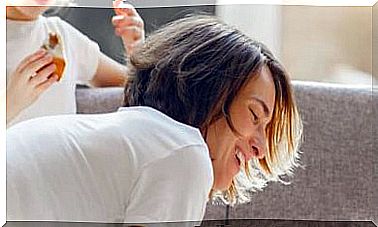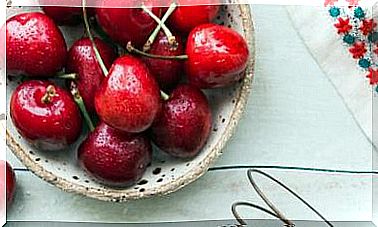Nasal Washing: A Simple And Very Preventive Technique
Regular nasal hygiene helps prevent respiratory, eye and ear infections in young and old, including babies.

The thousands of liters of air that we take in daily through the nose carry large amounts of particles, dust, bacteria and viruses. The mucosa of the nasal passages is, therefore, the first defensive barrier: it produces mucus that traps harmful substances and that is displaced towards the pharynx, by the vibrating cilia it contains, to be eliminated.
Keeping the mucosa clean is essential so that it can perform its function correctly and prevent the appearance or worsening of respiratory and associated infections. Let’s see how a nasal wash is done and what effects it has.
Nasal washing reduces the accumulation of harmful substances
If the function of the nasal mucosa is altered by allergies or the influence of pollution, the elimination of mucus slows down, thickens and accumulates in the nasal passages and sinuses, producing nasal obstruction, inflammation and even infection. In all these cases there is an alteration of the sense of smell.
Nasal irrigation or cleansing drags and removes foreign or toxic substances from the nasal mucosa and paranasal sinuses, which helps to restore the normal functioning of this first defensive barrier and increases the transport of oxygen to the brain, keeping the mind clearer.
Main indications of nasal wash
Nasal and sinus washing (maxillary, sphenoid, frontal and ethmoidal) is indicated in colds, bronchitis, asthma, allergies, sinusitis, eye infections, vegetations, otitis, pharyngitis, in case of nasal obstruction or when the mucus is thick .
It can be practiced with a variable frequency depending on the respiratory health of each person, from daily application in chronic patients to monthly in healthy people.
The nose relates to the eyes and ears
The nose, in addition to being the place where the sense of smell resides, is a strategic area for the other senses that have their origin in the head: sight, hearing and taste.
The fluid that cleans and lubricates the eye, the tears, is eliminated through the tear duct to the nostrils, where it is reabsorbed. If this duct is obstructed, there is constant tearing. This explains the relationship between colds and eye disease.
On the other hand, in the rhinopharyngeal area (the back of the nostrils), there are the two orifices of the Eustachian tube, which correspond to the communication channel between the pharynx and each of the ears.
This tube or tube allows the pressure between the inner side of the eardrum and the outer side to be balanced, since, through the mouth and nostrils, it communicates with the outside, equalizing pressures and allowing the eardrum to vibrate, which makes it easier for us to listen.
Its obstruction – for example, by the mucus accumulated in a cold – clogs the canal and prevents proper hearing, in addition to being able to cause otitis if the mucus facilitates the growth of infectious bacteria.
The taste and smell
The senses of taste and smell are interrelated. Taste cells are not only in the papillae of the tongue, but also in the roof of the mouth or palate and in the mucosa of the throat.
The aroma of a food perceived by smell is part of the perception of taste. Therefore, when we have problems in the upper respiratory tract, food does not taste the same.
Keeping the nasal passages clear of mucus and inflammation is a guarantee of good drainage of the tear ducts, an expeditious Eustachian tube, a healthy pharyngeal mucosa and a preserved sense of the palate.
No respiratory problems
Of course, removing mucus from the upper respiratory tract prevents it from descending into the bronchi and lungs, especially in children and babies, and complicating it with bronchitis or pneumonia.
It is also necessary to mention that a diet rich in sugars and refined and dairy flours favors the production and density of mucus, so a proper diet and the consumption of raw fruits and vegetables, or in juice, in abundance, are part of the treatment of respiratory problems.
Nasal wash methods
- An ancient technique in India. In our country there is hardly any tradition of nasal washing, but in other cultures, especially in India, their traditional medicine, Ayurveda, has practiced “jala neti” or nasal cleansing for millennia as a preventive and therapeutic measure, using the lota. , a ceramic jug adapted for this use.
- Western adaptations. In our culture, syringes are used (not recommended because it is difficult to regulate the outlet pressure of the liquid), single-dose in plastic containers or sprays. The technique is the same as with the burbot.
- Better in spray. The content of the syringe or single-dose is usually physiological saline, with a proportion of 0.9% sodium chloride. Nasal sprays, which I consider to be more recommended, generally contain seawater, which, in addition to 0.9% sodium chloride (like normal saline, isotonic) or 2.3% (hypertonic), provides minerals and trace elements, such as potassium, calcium, magnesium … with therapeutic activity.
- Hypertonic Hypertonic spray is indicated in situations of significant congestion or rhinitis, because, as it has a higher saline concentration, it removes the fluid retained in the nasal mucosa by osmosis.
How to do a nasal wash step by step
How to do a nasal wash in adults and children (not babies) with a lot (or spray).
- Fill the container – in the case of burbot – with the proportion of a level tablespoon of sea salt diluted in half a liter of warm water.
- The head is tilted to one side and the hole in the arm of the lotus (or the spray) is placed at the entrance of the highest nostril, so that the exit of the liquid through the nostril is facilitated by gravity. lower.
- Then the head is tilted to the other side and the operation is repeated, changing the nostril.
- If done correctly, the liquid barely passes into the throat and goes in and out of the nostrils.
- Then both nostrils are emptied well, pressing them and making the gesture of expelling alternately.
Nasal washing in babies
- In children and babies. In children you can proceed as with adults. On the other hand, with babies it is different. We must not forget that a baby has just spent nine months submerged in liquid and his nostrils are used to humidity, so it is important, especially in the months when heating is used at home, to maintain a healthy ambient humidity to avoid infant dry rhinitis.
- Thick mucus Nasal washes in the baby are advised when there is thick mucus that makes breathing, or even feeding, difficult. After six months, if the congestion is very intense, the hypertonic solution could already be used.
- The baby, sideways. The technique is the same as that explained in the upper box for washing with burbot (as with spray), but obviously with a small amount of seawater. It should be applied when the baby is calm, stretched out and turning his head to the side, with a washcloth around his neck to collect the liquid that falls. Ideally, do it with the help of another person to hold the baby’s arms.
- Help him expel. Above all, avoid doing it with the child lying on his back, since the mucus, through the Eustachian tube that is in the back of the pharynx, could reach the ear and promote otitis. After the nasal wash, it is advisable to incorporate the baby for a little while to help him expel the fluids that are retained.
- Vacuum the snot. Nasal aspiration is not recommended when there is very little mucus, and even less if it is not visible. It could damage the mucosa. Like nasal washing, it is convenient when mucus is abundant, thick, and makes breathing difficult.
